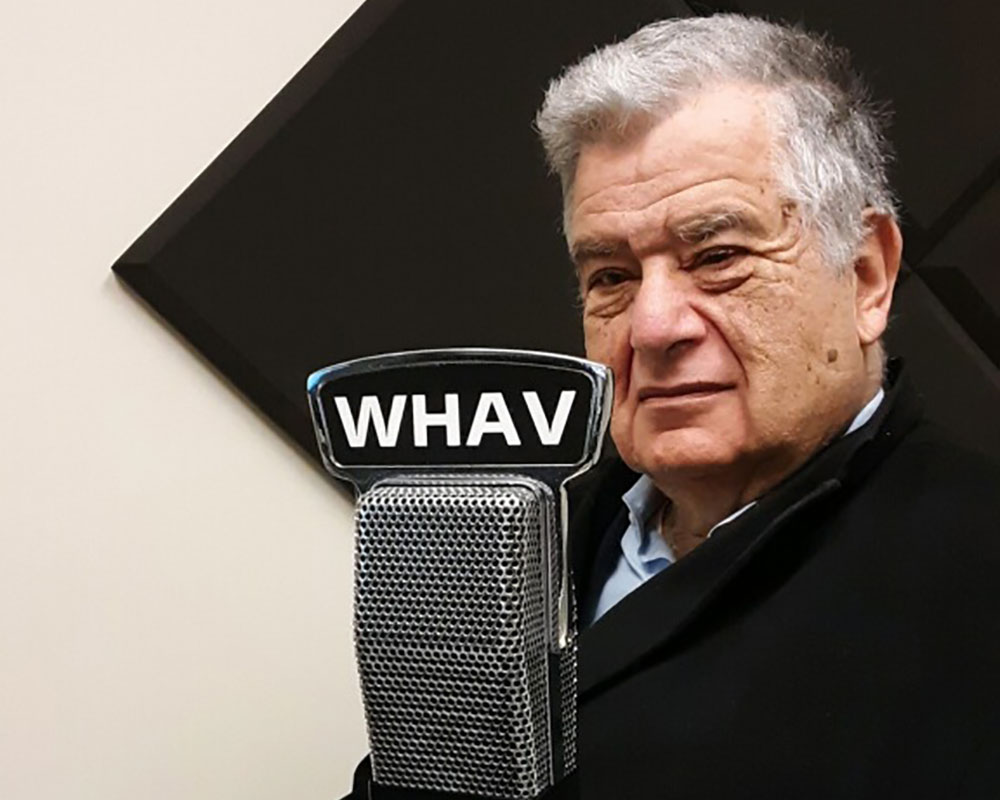Haverhill Mayor James J. Fiorentini was sworn in almost 20 years ago against the backdrop of the largest municipal debt in state history, downtown buildings that had been mostly vacant for decades, the recent layoffs of 43 city workers and even ragged carpets in City Hall held together with duct tape.
The downtown commercial district had been in decline for decades, worsened by such efforts to prop it up as the federal urban renewal demolition program. It was the financial collapse of the city-owned Hale Hospital, part of a national trend, however, that turned simmering hopelessness into full-blown panic.
As he prepares to leave office, the mayor detailed during an extensive WHAV interview how the city turned around. During a live appearance on WHAV’s “Win for Breakfast” program, Fiorentini said, for example, downtown’s renaissance came down to parking, but not in a conventional sense.
“The key to redeveloping a downtown—now I can tell it—is parking, but not the way people think. People think it’s to have more parking. The key to re-developing a downtown, and we’re the leader on this, is less parking—not more parking. If you take up your retail space, the prime spots, for parking, you’re never in a million years going to redevelop your downtown. The downtown has to be a destination that people want to go to. If they want to go there, they will find a place to park,” he said.
The mayor’s view was shaped years before his foray into politics by City Councilor Joseph P. Willette, also a former mayor under a different city charter. Fiorentini had been hired more than 40 years ago by former WHAV owner Edward I. Cetlin to represent the Haverhill Downtown Merchants Association. The merchants advocated for the construction of what became the Herbert H. Goecke Memorial Parking Deck. Councilor Willette, however, schooled him on the absurdity of the idea.
“‘This doesn’t make any sense to me at all. You’re taking buildings that people want to go to. You’re knocking those buildings down so when they go there, they’ll have a place to park. But, they won’t go there anymore—you’re taking the buildings down.’ And, the smart architects and planners from Harvard got up and said there will be other buildings that will come up in front of them. That never happened. Downtown was languishing anyway because of the competition from New Hampshire, because people were leaving downtowns to go to the malls. There are lots of reasons, but urban renewal, the building of the deck, made it worse and accelerated it,” Fiorentini explained.
The mayor also took another lesson from his grandparents, who owned the Roma restaurant when it was located downtown. Contrary to conventional thinking, his grandmother wanted additional competitors to drive people downtown and to all of the restaurants.
“If they want to go there. they’ll find a place to park. If you take up the prime spot—this is the mistake we made 50 years ago. We took up our prime spot and made it into the Goecke parking deck. No, that was a mistake, you want your prime space to be a destination and then you want to build your parking offsite. People will find a way to get there. They’ll find a place to park. If there’s no reason to get there, the parking lots will be empty.”
Besides parking, Fiorentini shared his philosophies and lessons learned while converting shoe shops into housing, attracting big names to the city’s business parks and creating a downtown skyline. He also warns Haverhill must complete the new business park at the former Dutton Airport as the city has run out of places to grow.
Besides WHAV.net, WHAV’s “Merrimack Valley Newsmakers” podcasts are available via Apple Podcasts, Amazon Music, Spotify, iHeart Radio, Google Podcasts, TuneIn and Alexa.

